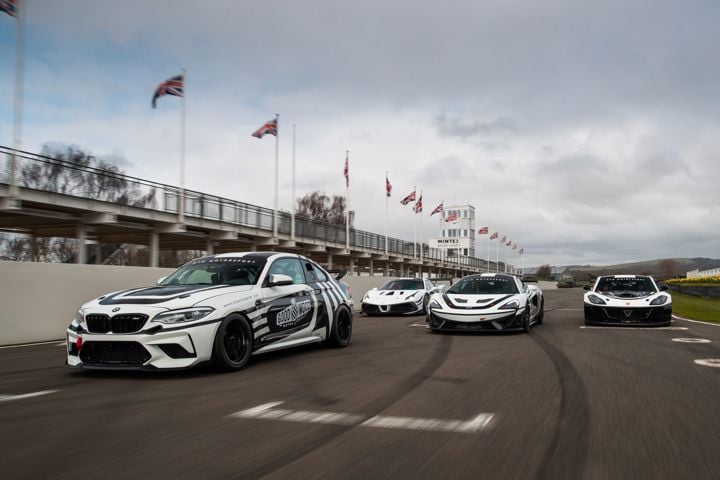Wireless, ultra-fast, and game-changing: Inside the EV charging revolution
The fluorescent paint on the new Porsche Cayenne Electric glows an otherworldly green under the alternating current at its Leipzig test facility. There are no cables, no fumbling with connectors in the rain. The car simply parks above a floor-mounted plate, lowers its suspension, and begins charging. Science fiction made mundane.

This is the future of electric vehicle charging, arriving sooner than most expect. While headlines focus on stuttering EV adoption rates, a revolution is unfolding. Wireless charging eliminates cables, ultra-fast public infrastructure delivers 600 kilowatts and breakthrough battery chemistry promises 500 miles of range from a 12-minute charge. Together, these innovations address the three pillars of electric vehicle reluctance: convenience, speed and range.
The end of the cable: Porsche's wireless charging
Watching the new Cayenne Electric position itself with millimetre precision above the inductive charging plate at the Porsche Experience Centre in Leipzig, the most striking element isn't the technology — it's the seamlessness. The car's Surround View system guides positioning, the suspension lowers automatically and charging begins. No physical connection, no degraded cables, no broken connectors.
Porsche is introducing inductive wireless charging for its upcoming all-electric SUV, marking the first deployment in one of its production models. The system delivers up to 11 kilowatts via a floor-mounted base plate that replaces traditional wallboxes. The one-box unit installs indoors or outdoors and connects directly to the mains. A receiver coil in the vehicle's underbody enables charging when parked above the plate.

Porsche states the system achieves up to 90 per cent efficiency. Safety features include motion detection and foreign object recognition, interrupting charging if people, animals or metallic objects interfere. In practice, the cut off is instantaneous, ensuring your neighbour’s cat will remain unharmed. Integration with the My Porsche app enables monitoring and authentication. Park the car, and it charges. No ritual, just automatic replenishment.
Weighing around 50 kilograms, the base plate is equipped with LTE and WLAN modules for remote software updates. Sales are planned for 2026 through Porsche Centres and online. The Cayenne Electric debuts at the end of 2025.
Crucially, the wireless system is intended for home use. The Cayenne also supports DC charging at up to 400 kilowatts for long-distance travel. Wireless charging solves daily convenience; ultra-fast DC charging solves road trips.
The ten-minute top-up: ChargePoint Express Grid
If wireless charging solves home convenience, the ChargePoint Express Grid addresses public infrastructure deficits. Developed by ChargePoint in collaboration with Eaton, the charging architecture introduces speeds up to 600 kilowatts. A large 80-kilowatt-hour battery electric car could top up in just ten minutes.
The technology offers ultra-fast public charging exceeding even the fastest electric vehicles on sale today. Its aim is to solve current grid constraints while future-proofing infrastructure. By introducing speeds faster than any mainstream electric car currently facilitates, the architecture is prepared for when charging speeds evolve further.
Consider the Kia EV6, with its 80-kilowatt-hour battery charging at up to 256 kilowatts. At its quickest, the EV6 tops up from 20 to 80 per cent in 18 minutes. With ChargePoint Express Grid, charging time would be almost halved — transforming the electric vehicle from a car you plan journeys around to one you simply drive.
The ChargePoint Express Grid integrates into low-cost products in the second half of 2026 for public charging stations and fleets. The modular chargers expand easily as demand grows, addressing the inability to scale capacity quickly in response to local demand.
Vehicle-to-everything (V2X) capability allows the system to balance the National Grid by feeding stored energy back from plugged-in car batteries during high demand. According to ChargePoint, the technology turns electric vehicles into portable batteries, powering home electricity should the grid fail during storms. This bidirectional capability transforms electric vehicles from passive consumers into active grid management participants.
Recharging costs should reduce, since the technology minimises waste energy from AC-DC conversion — particularly attractive for fleet operators. Deliveries begin in the second half of 2026 in North America and Europe.
The battery breakthrough: 500 Miles in 12 Minutes
While Porsche and ChargePoint address how we charge, scientists in Korea achieved a battery breakthrough, claiming 500 miles of range and 12-minute charging times — figures obliterating the two most cited barriers to electric vehicle adoption.

Lithium-metal batteries represent the logical evolution of lithium-ion batteries. The technology replaces the graphite anode with lithium metal, increasing energy density and offering more range and faster charging.
However, scientists remain far from production-ready lithium-metal batteries. They're preventing dendrites — a crystalline substance — from forming on the lithium anode during charging, which degrades performance. Dendrites worsen significantly with faster charging and increase short-circuit and fire risk.
One Massachusetts Institute of Technology solution suggests replacing traditional liquid electrolyte with ultra-thin solid ceramic material. This would make batteries smaller, lighter and safer, as ceramic electrolyte isn't flammable like liquid electrolytes.
The dendrite challenge highlights battery development trade-offs: energy density, charging speed, safety and longevity. The Korean breakthrough represents progress, but commercialisation remains years away. Unlike wireless charging or ultra-fast infrastructure arriving in 2026, lithium-metal batteries require further refinement.
Why innovation matters now
Despite technological progress, electric vehicle adoption remains below expectations. Purchase price remains one of the biggest driving factors for new vehicle purchases in 2025, according to J.D. Power. These advancements could make electric vehicles more expensive short-term, though economies of scale will catch up.
"The industry needs products that meet consumer demands at prices that are affordable," notes Brent Gruber, Executive of the EV practice at J.D. Power. Charging innovations arriving in 2026 address convenience and speed concerns, but don't directly solve affordability. Premium technologies will command premium prices initially.
The Goodwood Festival of Speed presented by Mastercard elevates the EV game, championing electric performance with runs up the Hill from the likes of the Hyundai Ioniq 6 N to production electric supercars. By providing platforms for manufacturers to showcase innovations beyond motor show sales floors, the event allows technology to be judged on merit.
Infrastructure innovations arriving in 2026 won't convert everyone overnight. Anxieties around range, charging and costs persist. But they remove credible objections. Drivers can't claim electric vehicles are inconvenient to charge when wireless charging exists; they can't argue public charging takes too long when ten-minute top-ups become available; they can't cite insufficient range when 500 miles from a 12-minute charge enters the equation — even if that innovation arguably remains years from showrooms.

The convergence
Back at Leipzig, watching the Cayenne Electric charge wirelessly as autumn light fades, a shift is palpable. Not sudden revolution — electric vehicle adoption will remain gradual, constrained by infrastructure build-out and consumer economics. But convergence.
Porsche's wireless charging launches in 2026. ChargePoint's 600-kilowatt Express Grid arrives the same year. Lithium-metal batteries remain further out, but the trajectory is clear. These aren't isolated innovations; they're complementary solutions to distinct aspects of the same problem. Together, they sketch what electric vehicle ownership will look like in the 2030s: convenient at home, rapid on the road, capable of covering distances that make range anxiety obsolete.
For an industry that spent a decade promising electric vehicles are the future, 2026 marks when the future arrives — not with a single breakthrough, but with convergent innovations collectively answering the question every sceptic asks: why would I switch?
Randox is a global leader in diagnostics, revolutionising patient outcomes through innovative technologies, including its patented biochip technology. This pioneering diagnostic platform allows for the simultaneous detection of multiple biomarkers from a single sample, delivering faster, more accurate, and comprehensive results. Operating in over 145 countries, Randox develops advanced laboratory instruments, high-quality reagents, and innovative testing solutions to improve global healthcare.
Randox Health brings this cutting-edge technology directly to individuals, offering bespoke, preventative health testing programs. With world-class laboratories and personalised health insights, Randox Health enables early detection of a wide range of conditions, helping individuals take control of their health.
Together, Randox and Randox Health are redefining diagnostics and preventative healthcare. For more information, visit www.randox.com and www.randoxhealth.com.
festival of speed
fos
event coverage
future lab
fos future lab
EV
Electric car












